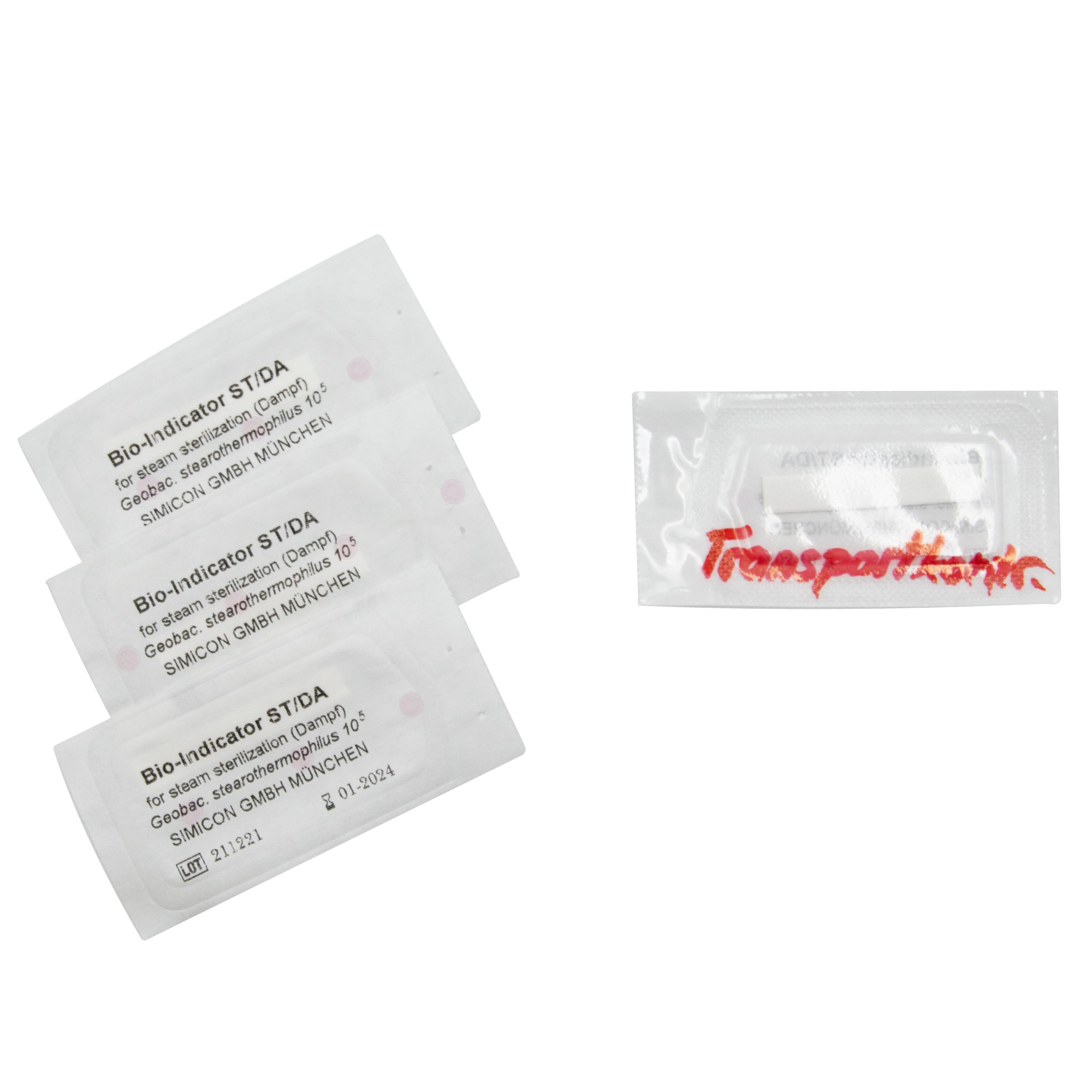Bioindicators for self-monitoring of sterilisers / autoclaves
Product number: 9900021
136,00 €*
* Prices excl. VAT plus shipping costs.

Product information
Dimensions: 70 x 30 x 10 mm
Weight: 0,050 kg
Description
Description "Bioindicators for self-monitoring of sterilisers / autoclaves"
Bioindicators for self-monitoring of sterilisers / autoclavesScope of delivery:
3 bioindicators and one transport control (autoclave up to 250l)
For these reasons, the inspection and associated validation of autoclaves in healthcare facilities is regulated in various standards:
- EN ISO 17665 - 1: 2006 - 11: This international standard defines the "Sterilisation of health care products - Moist heat - Part 1: Requirements for the development, validation and control of the use of a sterilisation process for medical devices". This standard is the successor to the following standards DIN EN 554 (58946 - 6) and represents the state of the art with regard to moist heat sterilisation processes for medical devices.
- DIN EN 554: This standard specifies the "Sterilisation of medical devices - Validation and routine control for moist heat sterilisation". It is primarily used for quality assurance of sterilisation.
- DIN 58946-7: 2014 - 01: This regulates "Constructional requirements as well as requirements for the equipment and operation of steam sterilisers in healthcare".
- DIN EN 285: 2016 - 05: This standard for "Sterilisation - Steam sterilisers - Large sterilisers" specifies the essential performance requirements including the associated test methods.
- EN ISO 15883: Finally, this standard is a general "series of standards for washer-disinfectors" relating to equipment requirements and validation of processes for reprocessing.
The bioindicators are added to the autoclaves or the autoclaving process. This is to provide evidence of successful germ elimination of the test germ "Geobacillus stearothermophilus". The sterilisation process is thus biologically tested by means of the HyMo box.
After sterilisation, the bioindicators are removed and sent to the accredited Hohenstein laboratory for evaluation. Here, the bioindicators are examined in the laboratory. If the test germ "Geobacillus stearothermophilus" grows up, the sterilisation process is not valid and further observations of the sterilisation process must be checked with the operator after the evaluation with regard to the settings (e.g. temperature, programmes, dosage, etc.) and the functioning of the steriliser.
Proof of successful germ elimination of the test germ in the laboratory, on the other hand, indicates a safe sterilisation process.
The test result of the laboratory examination is sent to the operator as a report with an evaluation by the Hohenstein Laboratory and has the character of a self-monitoring to prove that the steam sterilisation process was successful.
If the sterilisation is demonstrably successful, the process is safe in terms of reliably killing germs and the sterile items passing through can be described as sterile. Microorganisms can only penetrate the sterile barrier if it is damaged.
The use of bioindicators for sterilisation should help to ensure the biological safety of the equipment. The bioindicators, as well as the sterilisation box (HyMo-Box), which is optionally available as a complete set, can be used in smaller facilities such as outpatient clinics and doctors' practices as well as in hospitals and clinics.
With the step-by-step instructions, the responsible staff can carry out the test independently on a regular basis. The bioindicator test is a cost-efficient instrument for checking the sterilisation process, which is characterised by simple and uncomplicated handling. It gives you an insight into the effectiveness of the sterilisation process. The patient risk is considerably reduced by regular biological checks, possible surgery postponements or cancellations are eliminated because the instrument sieve intended for use in surgery can be used.
With the swab plates, which are also in the optionally available HyMo box "Sterilisation Check", the low germ count can be checked on work surfaces that are used to prepare for sterilisation, for example wrapping in the sterilisation packaging. With the supplied results of the surface germ counts, cleaning-disinfection plans can thus also be adapted and updated.

